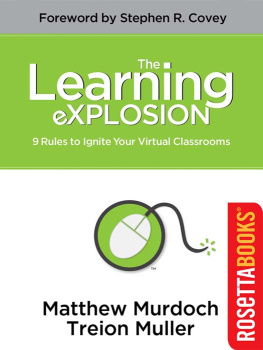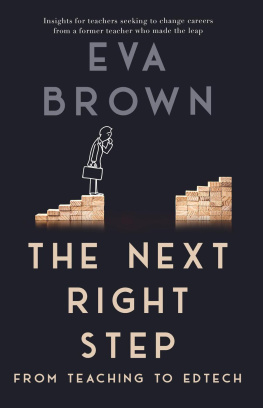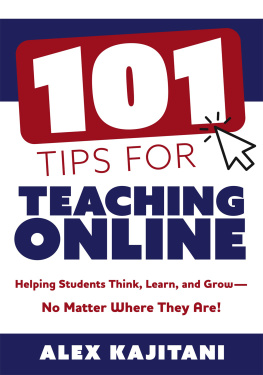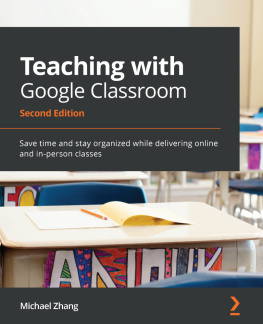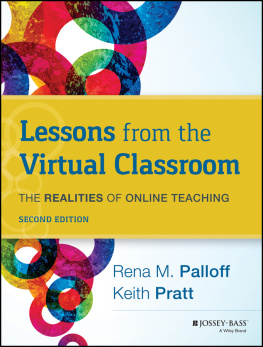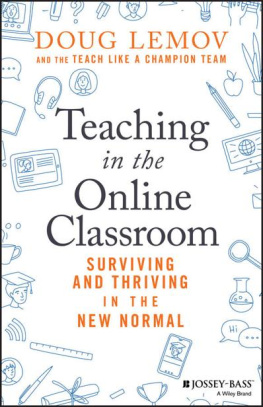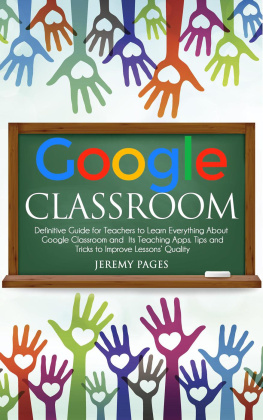The
Learning
eXPLOSION
Matthew Murdoch
Treion Muller
2011 FranklinCovey Co. All Rights Reserved.
No part of this book may be reproduced, in any form or by any means, without permission in writing from the publisher. Requests to the publisher for permission should be addressed to the Rights Manager, FranklinCovey Co., 2200 W. Parkway Blvd., Salt Lake City, Utah 84119, (801) 817-1776, email: legal@franklincovey.com.
Company and product names mentioned herein are the trademarks or registered trademarks of their respective owners. Published by FranklinCovey Publishing, a division of FranklinCovey Co.
First Electronic edition published 2011 by RosettaBooks, LLC, New York
ISBN e-Pub edition: 9780795317217
The ability to deliver training online is essential for companies large and small. The Learning Explosion is an insightful and practical guide for making the virtual training movea must-have for your training toolkit.
Kathy Chill
VP, Business Development
Citrix Online
The Learning Explosion is a great resource for training professionals charged with the task of introducing virtual learning to a corporate environment. Whether youre incorporating a blended-learning approach or straight virtual-classroom training, the new mind-set and the new rule-set outlined in this book will serve as your go-to guide.
Paul Krause
President and CEO
Element K
The training world is changing. Dont go virtual on your own let The Learning Explosion guide the way.
Andrew Scivally
President
eLearning Brothers
Table of Contents
Foreword
First and foremost, I am a teacher. Teaching is where I found my voice. I have dedicated myself to traveling around the world to teach timeless, universal principles and inspire people to fulfill their potential and their unique purpose and mission in life. From boardrooms and government chambers to classrooms, family rooms, and community halls, I have met people from all walks of life, from all four corners of the world. In each of these special engagements, I have been humbled by the transformational power of principle-based learning.
The pursuit of knowledge is an exciting process, and the speed and demand for learning is ever increasing, especially in our fast-changing world. Daily, we all search for answers to questions and problems as we face new challenges. With technological advances, a wealth of information is now available that can quench this thirst for knowledge and connect people for information sharing. Because of this technological network, there is vast and growing potential for learning to flow to all humankind. It is our opportunity and responsibility to help this knowledge flow reach learners so they can achieve their potential.
I am amazed at the different types of technology I am able to use to teach and instruct people around the world. Online delivery of lessons and content is allowing me to teach people I would never reach otherwise. This is very exciting. As a result of this real-time, on-demand learning, people have the ability to acquire insights quicker and immediately apply their learnings to their specific problems or opportunities.
There will always be a need for in-person interaction. Yet, for learning to occur, it does not need to happen solely in a classroom made of bricks and mortar. Learning is happening in your organization right now. People are finding sources of knowledge all around them on the Internet, in books, on a conference call, and in virtual classrooms. Although I will always enjoy physically shaking the hands of people and seeing the excitement in their eyes after they have obtained new knowledge, I believe we have reached a point in our lives where the act of learning has changed, and we need to accommodate peoples needs.
This book will give you the principles and mind-set to understand how learning is changing and exploding. It will explain the way learners acquire information and how you can provide it to them through the use of a new virtual-classroom rule-set.
I encourage you to think through these concepts and use them to improve the reach and quality of your learning and teaching. I am thrilled to have this body of work and excited to be taking part in new learning technologies to make a greater contribution in the world.

Dr. Stephen R. Covey
Introduction
When we started researching the feasibility of moving face-to-face training to virtual classrooms, we attended numerous online events and spoke to many experts. We then set out applying the best of what we heard and read and omitted the ineffective practices we experienced firsthand. Since then, we have actively been testing, modifying, retesting, and fine-tuning our virtual-classroom programs while training instructors and launching virtual-classroom initiatives worldwide.
The purpose of this book is to share the principles and practices weve discovered with everyone who has been tasked with moving traditional training to virtual classrooms.
Virtual classroom [ vur-choo-uhl klas-room] -noun
A virtual classroom is a learning environment created in the virtual space. The objectives of virtual classrooms are to improve access to advanced educational experiences by allowing students and instructors to participate in remote learning communities using personal computers, and to improve the quality and effectiveness of education by using the computer to support a collaborative learning process. The explosion of the knowledge age has changed the context of what is learned and how it is learnedthe concept of virtual classrooms is a manifestation of this knowledge revolution.
Do we have all the answers, anecdotes, and instructions you will need? Probably not. But the rules, tools, and practical tips we share in this book will hopefully form a sound foundation from which to start or improve your own virtual-classroom initiative.
The firstand most importantlearning principle we wish to share can be summarized in just three words: Keep it short. Over the past decade, we have all been conditioned to learn in short, bite-size chunks, thanks to the billions of learning fragments available to us at the touch of a screen and with the click of a mouse. This is the new learning realitythe way most people want to learn, like to learn, and choose to learn.
You have probably noticed by now that we have followed our own advice. This book is fairly short. This was intentional. Think about how many times you have bought a business book, only to read the first couple of chapters and then put it away. We have been conditioned to read fast, to skim, and to find relevant nuggets.
Another valuable principle we have learned is to provide opportunities for learners to apply what they have just read. We have done this by providing a Learning Explosion Action Plan at the end of each chapter.
We recognize that all of us are at different stages of virtual-classroom development. And we all have varying needs and requirements. It is our hope and mission to provide you with new insight to help you succeed in this exciting and ever-changing modality of training.
From the blackboard to the Web;
from the desk to the virtual classroom;
from prescriptive instruction to self-directed;
from traditional to informal:
this is the new learning reality
the way people want to learn, like to learn,

